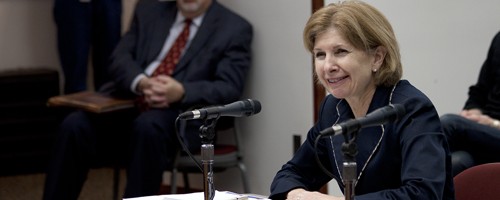A brief history of horror
Of all film genres, horror seems to be the one most prone to remake-mania. Over the course of just the last few years, we’ve witnessed the second coming of The Hills Have Eyes, The Texas Chain Saw Massacre, Dawn of the Dead, The Omen, The Amityville Horror, Wicker Man, and When A Stranger Calls, among others. Rob Zombie’s “re-imagining” of Halloween is in theaters right now, and I just read that even Black Christmas, a relatively obscure (but influential) 1974 Canadian-produced slasher set in a sorority house, is going to be resurrected. What’s the deal? Have we really run out of ideas for horror movies, or is the new generation simply laying claim to the nightmares of our parents? More importantly, are any of these reprisals worthwhile, or are you better off renting the originals?
The grim masterpieces that ushered in the age of modern horror were a product of their time. They were original visions borne out of the darkness, brutality, and sense of chaos and disorder that reigned in the nation in the late ’60s continuing into the ’70s. It started in 1968 with Night of the Living Dead, the George Romero classic that launched the zombie genre, which is still with us today, although it has become ironic and self-mocking with parodies like Shaun of the Dead now typical. Night of the Living Dead is a beautiful, restrained, almost poetic film, interestingly filmed in black and white considering the racial overtones that inform the script. When it came out, it was quite unusual for a black man to play the lead; equally jarring is the fact that he dies at the end of the film.
By 1972, when Wes Craven’s first shocker Last House on the Left hit the late night drive-in circuit, things had darkened considerably. Last House on the Left is to this day one of the most disturbing, perverse and sadistic films ever made in America. Its voyeuristic camera and vaguely documentary quality would be used to more artistic effect two years later in Tobe Hooper’s classic The Texas Chain Saw Massacre, which introduced the concept of the mask-wearing killer and is my personal pick for the greatest horror film of all time. And, in 1978, John Carpenter’s original Halloween terrified moviegoers and kicked off the slasher genre as we know it, for better or worse.
What it boils down to is that the ’70s were the golden age of American horror. All of the films mentioned in the paragraph above, as well as others – like Black Christmas, The Exorcist and The Omen – had a profound impact on pop culture and our national consciousness that film-makers today try desperately to duplicate, apparently unable to summon equally powerful visions of their own. When a director today does attempt originality, it’s often highly derivative, as with Rob Zombie’s first film, House of 1,000 Corpses, which comes off as an homage to the ’70s splatter classics that obviously inspired him, as if it’s impossible to crawl out from beneath those towering shadows of influence.
One example of the shortcomings of the remake frenzy: The 2003 Michael Bay-produced Texas Chainsaw (one word) Massacre. The original Chain Saw is a masterpiece of mood creation and the slow build-up of tension. People often dismiss it as being “low-budget,” but its grainy, documentary texture is part of what makes it so terrifyingly real. It has no sex, no drugs and no rock ‘n’ roll, and its homemade, noisy, low-fi soundtrack fits the contours of the film perfectly. The 2003 version – which I like to call The MTV Beach House Massacre – features actors that look like they were ordered from an Abercrombie & Fitch catalog and a cheesy, symphonic soundtrack that neutralizes anything that might actually have been scary about the film. In one of the very first scenes, the hot youths in their van turn on Lynyrd Skynyrd, light up a joint, and two of them start humping in the back. If this is a re-imagining, all I can say is our imaginations used to be better.
There’s an excellent documentary by IFC Films called The American Nightmare, which examines what was happening in our culture in the late ’60s and ’70s and how it lead to the creation of these incredibly dark and unsettling works of art. Things that have become trite today – like the cliche of running out of gas in the middle of nowhere – are traced to their real-life antecedents: the world oil shock of 1973, when “No Gas” signs popped up in gas stations all over the country. Here in the United States of Amnesia, we frequently need to be reminded of our own history, as recently as 20 or 30 years ago.
Why can’t we make new horror movies of our own to stand beside the classics? It’s not like we’re lacking in subject matter. If anything, there are some eerie parallels to the chaotic ’70s happening right now, and you could make the argument that our current political situation is even scarier. Yet the genre of horror seems tapped out, judging by the frequency with which we rehash the oldies.
Maybe reality is the new horror. Fifty years ago the monster was a supernatural creature – a Wolf Man or Frankenstein stitched together from the bodies of the dead. Today, it could be your neighbor.



